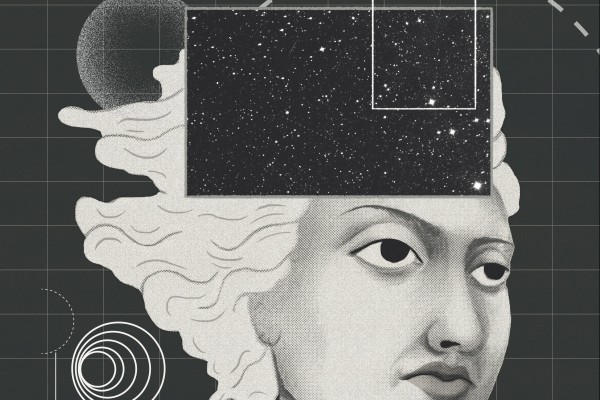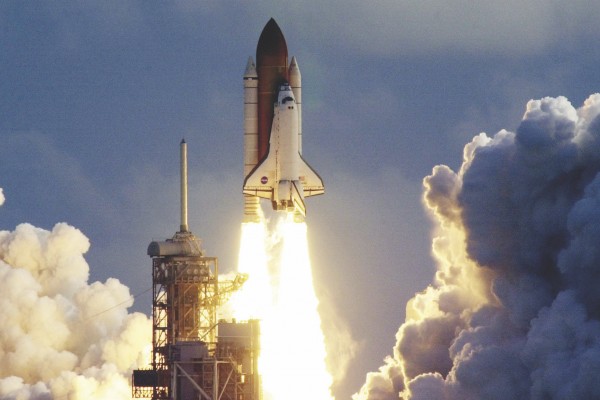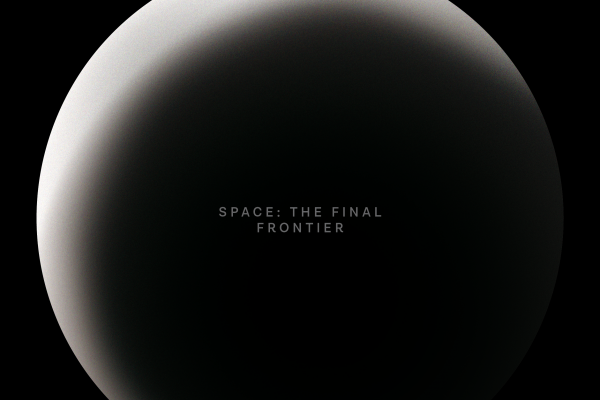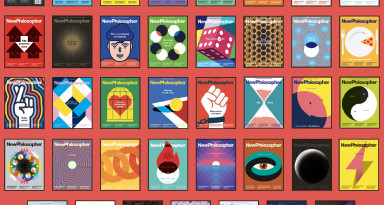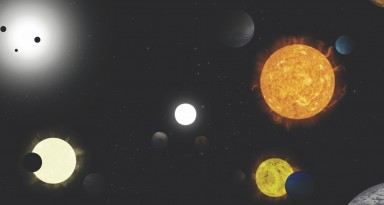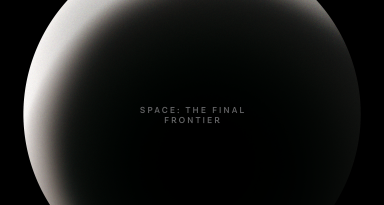When it comes to measuring the vastness of outer space, you need to talk about time in order to talk about distance. Watching the night sky with my children, I tell them that the starlight now reaching our eyes is ancient. Some of it originated when dinosaurs stood where we are now standing; some of it before life even existed on Earth.
I’m using a little poetic licence when I say this. Technically, the oldest light our unaided eyes can see is no more than 2.5 million years old and comes from the nearby Andromeda galaxy (and it has to be a clear, moonless night for that to show up). But given that our aided eyes can peruse, via my mobile phone, maps of the cosmic microwave background radiation left over from the big bang 13.8 billion years ago, I reckon the underlying principle is what counts – and any opportunity to mention dinosaurs is a bonus.
Interstellar distances are mind-boggling to explain. Yet my son, aged seven, seems to grasp at least their essence. That’s one of the things about space (and dinosaurs): precisely because they lack any social context, they’re easy to talk about with children. The fact that instantaneous motion between two different places isn’t possible makes sense in a way that, for instance, the fact that mummy and daddy have to go to work doesn’t. So far as we know, the laws of physics are the same on the far side of the universe – something that can’t be taken for granted when it comes to human habits and a few hundred miles.
Here’s how I talk about space with my son. It takes an hour for us to drive in my car to his grandmother’s house, thirty miles away. If we could travel twice as fast, we would get there twice as quickly, but it would still take some time (half an hour, he pipes up proudly as I read him this paragraph). If we could travel as fast as light – at a shade over 180,000 miles per second – it would take around 0.0002 seconds. No matter how fast you go, or how short a distance you’re covering, some time must always elapse. In the one hour that it takes us to drive thirty miles, light setting off from the Sun has made it most of the way to Saturn. But it will be over five hours before it reaches Pluto – and four years until it reaches our nearest stellar neighbours, the binary stars Alpha Centauri A and B. The same thing cannot be in two places at the same time: not even light.
At this point, the way our universe works becomes less intuitive. Unlike the speed of my car, the speed of light isn’t an arbitrary number: it’s an upper bound of the laws of physics as we understand them. The speed at which light travels through a vacuum is also the maximum speed at which any kind of matter, energy or information can move from one place to another. In effect, it is the speed of time itself. And time has a property that has been drawing comment since the dawn of philosophy: unlike space, you only get to move through time in one direction.
Even my daughter, who’s four, knows some of what follows from this. She’s never going to see a real-life dinosaur. Nor will any other human. “This too shall pass,” goes the Persian adage, summing up the most ironically enduring of truths: in the end, the destiny of everyone and everything is entropic dissolution.
If this were all star-gazing had to teach, clear nights would feel pretty bleak in the Chatfield household. But entropy is just the beginning. In a November 2020 paper in the journal Frontiers of Physics, the astrophysicist Franco Vazza and neurosurgeon Alberto Feletti investigated the resemblances between what they call “two of the most challenging and complex systems in nature”: the network of neurons that makes up the human brain, and the cosmic web of dark matter that constitutes the universe’s largest known structural scale.
Once you get to the trans-galactic level – a scale dominated by so-called dark matter and dark energy which, although invisible to us, account for 95 per cent of the content of the universe – gravitational modelling reveals a network of filaments weaving billions of galaxies around voids measured in megaparsecs (about 3,260,000 light-years). This network and the structures of the human brain differ by more than 27 order of magnitude. Yet, the paper’s quantitative analysis suggests, there are remarkable similarities in the arrangement of their filaments and nodes: between the self-organising complexity of the matter interwoven between a hundred billion galaxies and the interconnections of the brain’s seventy billion neurons. “The tantalising degree of similarity that our analysis exposes,” the authors write, “seems to suggest that the self-organisation of both complex systems is likely being shaped by similar principles of network dynamics, despite the radically different scales and processes at play.”
The resemblance is not exact, of course. But if you compare – as my children and I did – visualisations of the cosmic web and human neurons side by side, it can be difficult at a glance to tell which is which. Both are beautiful and fractally complex: fibres branched and interlaced around bubbles of absence, like the interior of an infinite sponge cake.
To contemplate the depths of space and time, in other words, is to discover something at once incomprehensible and eerily familiar: a depth of self-similarity bridging biology and ten billion years of distance. All of human existence amounts to less than a flicker in time and space. Yet, when it comes to resisting entropy, there are common structures and rhythms between the strategies evolved by life on Earth and the grandest forms the universe has fallen into. Life tugs against time’s arrow, passing on its accumulated order through the aeons; and so does everything else, seeking coherence and form at every scale.
I watch the stars’ ancient light with my children, summoning an image of time’s beginnings and the universe’s farthest extent: sharing a fraction of our species’ understanding. I hope they will watch the same stars with their children; that they will gaze together into the distant past. Eventually, everything we are will return to the emptying distance between the stars. Across trillions of years, light will fade. All things will pass. Yet, here and now, we can hold a sketch of its form in the palm of our hands – and see in the sum of all things something of ourselves.
From the Space edition, which can be purchased in hard copy or digital format here.
